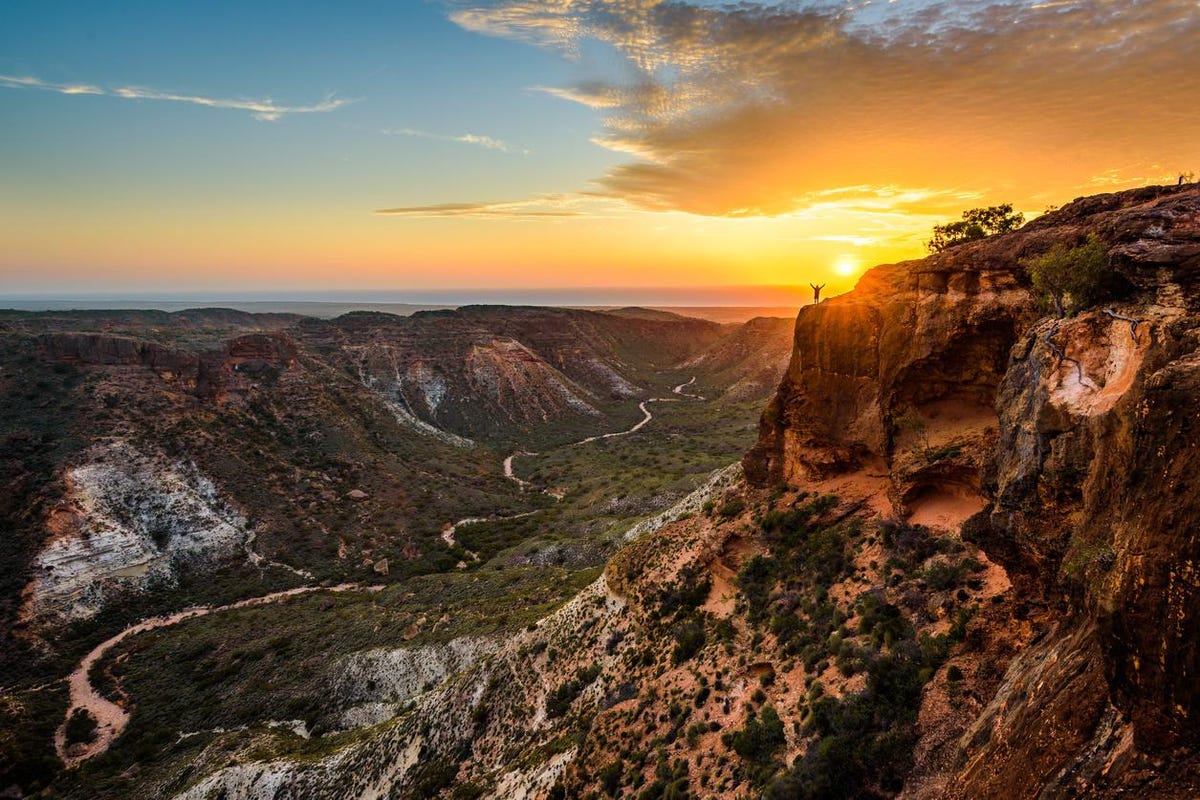On April 20, 2023 a rare kind of total solar eclipse will occur when the Moon’s shadow in space brushes across Earth’s surface. When it occurs on land, totality is an easy target for eclipse-chasers—as many as 31 million will experience one in 2024 in the U.S.—but this super-short eclipse takes places mostly over the Indian and Pacific Oceans.
However, many of the tiny islands and peninsulas this eclipse will visit—bringing with it a short daytime twilight and naked eye views of the Sun’s spiky white corona—just happen to be undiscovered gems for nature-lovers.
From reefs and islands to bays and peninsulas, here are some of the super-remote places in the southern hemisphere about to experience a rare totality as the Moon eclipses the Sun and sends a shivering moonshadow Earth-wards …
1. Montebello Islands & Lowendal Islands, Western Australia
Totality: 56 seconds at 11:34 a.m. AWST, April 20, 2023 (03:34 Universal Time)
About 75 miles offshore west of Onslow or Dampier on the Western Australia coast, the 265 low-lying islands of the Montebello Islands Marine Park were the site of atomic bomb testing in the 1950s (Trimouille Island and Alpha Island, specifically). Remains of the military activities such as concrete bunkers, monitoring stations, roads and scrap metal can still be found on some islands, and the former military operational headquarters can be seen on the southern end of Hermite Island. These days, most visitors fish or go snorkelling and scuba diving.
An alternative just to the south of the Montebello Islands with 1 minute totality and much birdlife is the Lowendal Islands Nature Reserve, an important area for crested terns, shearwaters, pied cormorants, terns and silver gulls.
The eclipsed Sun will be 54º above the northwest horizon.
2. Scott and Seringapatam Reefs, Indian Ocean
Totality (north side of Seringapatam Reef): 1 minute 12 seconds at 11:58 a.m. AWST, April 20, 2023 (03:58 Universal Time)
An atoll-like reef off Western Australia’s Kimberley Coast, Scott Reef is Australia’s largest oceanic reef system. Together with Seringapatam Reef to the north these structures encircle lagoons resembling misshaped rings rising into a blue sky. Scott Reef is made up of a large pear-shaped atoll with inside access and a horseshoe shaped atoll just four miles south. These reefs are known for game fishing, with Scott Reef a spear-fisher’s paradise.
The eclipsed Sun will be 65º above the northwest horizon.
3. West Island, Ashmore Reef, Timor Sea
Totality: 12 seconds at 12:04 a.m. AWST, April 20, 2023 (04:04 Universal Time)
Is this the perfect place to watch as the birdlife reacts to the eclipse, flying home to roost in the middle of the day as the sky darkens? Midway between Western Australia and Timor in the Indian Ocean/Timor Sea, Ashmore Reef is made up from West, Middle and East Islands—though only West Island can be visited. These tiny islands in the middle of the ocean are a magnet for seabirds, turtles (green, hawksbill and loggerhead), shorebirds, whale sharks and dugong. This bird sanctuary has 50,000 breeding pairs of various kinds of seabirds and herons and it’s a stopover for migratory birds on the East Asian-Australasian Flyway.
Any intriguing wildlife activity could be captured by the 120 eclipse-chasers on the Coral Expeditions Coral Adventurer ship, which will bring be in the region. They’ll see an eclipsed Sun will be 66º above the northwest horizon.
4. Cenderawasih Bay National Park, West Papua, Indonesia
Totality: 1 minute 6 seconds at 13:52 a.m. WIT, April 20, 2023 (04:51 Universal Time)
Northwest of the Indonesian province of West Papua, the very large Cenderawasih Bay National Park is home to the biggest fish in the Ocean—whale sharks. It’s also home to many World War II shipwrecks. That makes it the perfect place for diving—and on April 20, 2023, eclipse-chasers, too, though there’s a high chance of cloud on the day.
The eclipsed Sun will be 59º above the northwest horizon.
Amazing sea view from the air at Exmouth.
getty
5. Exmouth, North West Cape, Western Australia
Totality: 1 minute at 11:29 a.m. AWST, April 20, 2023 (03:29 Universal Time)
It’s by far the most populated place in Western Australia that will experience totality—in fact, it’s the only place on the continent’s mainland—but Exmouth, population 5,000, should still be considered a remote beauty spot. There could be as many as 50,000 visitors on the narrow peninsula for the eclipse, which will last no more than 60 seconds.
Close to Exmouth is Cape Range National Park, an area of quiet coastal areas and golden beaches with a lot of campsites and to-die-for eclipse-observing positions. Just north of Exmouth is Barrow Island, Australia’s premier oil and natural gas drilling region, where visitors are strictly prohibited.
The eclipsed Sun will be 54º above the northwest horizon.
Disclaimer: I am the editor of WhenIsTheNextEclipse.com and author of The Complete Guide To The Great North American Eclipse of April 8, 2024.
Wishing you clear skies and wide eyes.
Follow me on Twitter or LinkedIn. Check out my website or some of my other work here.
